-

Leucanthemum vulgare (Ox Eye Daisy) on 6-16-21, #801-50.
Ox-Eye Daisy, Dog Daisy, Field Daisy, Marguerite, Moon Daisy, Moon-Penny, Poor-Land Penny, Poverty Daisy, White Daisy
Leucanthemum vulgare
(Leucanthemum vulgare subsp. vulgare)
lew-KANTH-ih-mum vul-GAIR-ee
Synonyms of Leucanthemum vulgare (10) (Updated on 12-2-23 from Plants of the World Online): Chamaemelum leucanthemum (L.) E.H.L.Krause (1905), Chrysanthemum leucanthemum L. (1753), Chrysanthemum leucanthemum var. silvaticum H.Post (1844), Chrysanthemum leucanthemum f. tubiflorum J.Henriksson (1911), Chrysanthemum trapezuntinum Hand.-Mazz. (1909), Leucanthemum leucanthemum (L.) Rydb. (1916)(not validly publ.), Matricaria leucanthemum (L.) Scop. (1771), Pontia vulgaris (Lam.) Bubani (1899)(nom. superfl.), Pyrethrum leucanthemum (L.) Franch. (1885), Tanacetum leucanthemum (L.) Sch.Bip. (1844)
Synonyms of Leucanthemum vulgare subsp. vulgare (34) (Updated on 12-2-23 from POWO): Bellis major Garsault (1764)(not validly publ.), Chrysanthemum alpicola (Gremli) H.Hess, Landolt & Hirzel (1972), Chrysanthemum dentatum Gilib. (1782)(opus utique oppr.), Chrysanthemum lanceolatum Vest (1820)(nom. illeg.), Chrysanthemum lanceolatum Pers. (1807)(nom. superfl.), Chrysanthemum leucanthemum var. autumnale St.-Amans (1821), Chrysanthemum leucanthemum var. denudatum Boenn. (1824), Chrysanthemum leucanthemum var. hirsutum Lej. (1836), Chrysanthemum leucanthemum var. hispidum Boenn. (1824), Chrysanthemum leucanthemum var. integrifolium Heer (1836), Chrysanthemum leucanthemum var. nanum Heer (1836), Chrysanthemum leucanthemum var. subpinnatifidum Fernald (1903), Chrysanthemum pratense Salisb. (1796), Chrysanthemum sylvestre Willd. (1814), Chrysanthemum vulgare (Lam.) Parsa (1949), Chrysanthemum vulgare (Lam.) Gaterau (1789), Leucanthemum ageratifolium Pau (1902), Leucanthemum lanceolatum (Less.) DC. (1838), Leucanthemum praecox (Horvatić) Horvatić (1963), Leucanthemum praecox var. alpicola (Gremli) Villard (1971), Leucanthemum praecox var. autumnale (Saint-Amans) Villard (1971), Leucanthemum praecox var. rhodopaeum Kuzmanov & R.H.Kestenova (1980), Leucanthemum tubuliflorum Tinney (1867), Leucanthemum vulgare var. ageratifolium (Pau) Font Quer (1914), Leucanthemum vulgare var. autumnale (St.-Amans) Briq. & Cavill. (1916), Leucanthemum vulgare subsp. eliasii (Sennen & Pau) Sennen & Pau (1929), Leucanthemum vulgare subsp. heterophyllum (Willd.) Soó (1972), Leucanthemum vulgare subsp. multicaule A.P.Khokhr. (1991), Leucanthemum vulgare subsp. praecox Horvatić (1935), Leucanthemum vulgare var. sinuatum Timb.-Lagr. (1879), Phalacrodiscus lanceolatus Less. (1832), Tanacetum leucanthemum var. affine Simonk. (1887), Tanacetum leucanthemum var. auriculatum Simonk. (1887), Tanacetum leucanthemum var. coronulatum Simonk. (1887)Leucanthemum vulgare Lam. is the accepted scientific name for this species of Leucanthemum. It was named and described as such by Jean-Baptiste Pierre Antoine de Monet de Lamarck in Flore Françoise in 1779.
Accepted Ifraspecific Names (3): Leucanthemum vulgare subsp. parviceps (Briq. & Cavill.) Vogt & Greuter, Leucanthemum vulgare subsp. pujiulae Sennen, *Leucanthemum vulgare subsp. vulgare (autonym). *When infraspecific taxon are named, an autonym (“type-specimen”) is automatically generated whose description is closest to the (original) species. All have their own list of synonyms.
The genus, Leucanthemum Mill., was named and described as such by Philip Miller in the fourth edition of The Gardeners Dictionary in 1754.
As of 12-2-23 when this page was last updated, Plants of the World Online by Kew lists 48 species in the genus. It is a member of the plant family Asteraceae with 1,702 genera. Those numbers could change as updates are made on POWO. The number of genera in the family fluctuates quite often.

Distribution map for Leucanthemum vulgare from Plants of the World Online. Facilitated by the Royal Botanic Gardens, Kew. Published on the Internet; http://www.plantsoftheworldonline.org/. Retrieved on November 28, 2022.
The above distribution map of Leucanthemum vulgare from Plants of the World Online shows its wide range. Areas in green show where the species is native and purple where it has been introduced. Leucanthemum vulgare subsp. parviceps is found in France and Leucanthemum vulgare subsp. pujiulae is found in France and Spain. This map could change as updates are made.

Distribution map for Leucanthemum vulgare from the USDA Plants Database. Published on the internet at https://plants.sc.egov.usda.gov/home. Retrieved on May 15, 2021.
The map on the USDA Plants Database for North America shows the species is found in all 50 states and most of Canada. Can’t get much more widespread than that… The species could be more or less widespread. No map online is perfect or really even up-to-date.
The map on iNaturalist shows where members have made observations. Anyone can join and it is a great website to confirm and share your observations. The maps on iNaturalist are continually updated as members post new observations.
THERE ARE SEVERAL LINKS AT THE BOTTOM OF THE PAGE FOR FURTHER READING AND TO HELP WITH A BETTER POSITIVE ID.

Leucanthemum vulgare (Ox Eye Daisy) on 5-28-22, #885-22.
Leucanthemum vulgare (Ox Eye Daisy) is found throughout the United States and much of Canada where they are considered an introduced species. You can see from the maps above the species is very widespread. I found my first colony on a friend’s farm in 2019 then here in the south hayfield in in 2021. In 2022, I found a small colony across the fence in the northeast part of the farm in a neighbor’s pasture. Then, in 2023, on this farm.
Common names include Ox-Eye Daisy, Dog Daisy, Field Daisy, Marguerite, Moon Daisy, Moon-Penny, Poor-Land Penny, Poverty Daisy, White Daisy, and possibly others.

Leucanthemum vulgare (Ox Eye Daisy) on 5-28-22, #885-23.
The stems of Leucanthemum vulgare are generally glabrous (not hairy) but sometimes slightly hairy. GEEZ! Branching occurs mainly from the base of the plant where there are usually a lot of leaves.
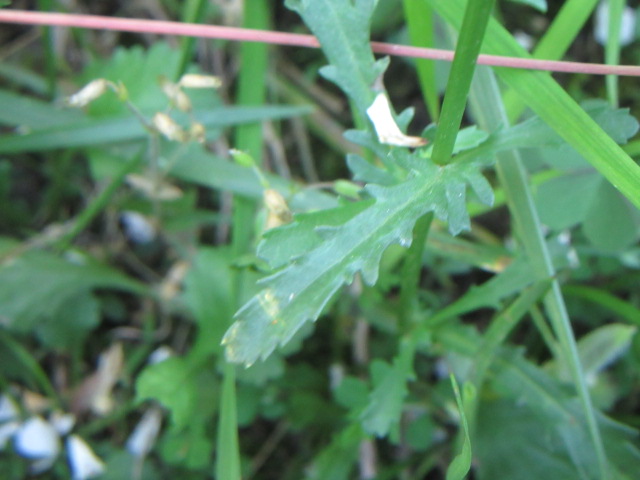
Leucanthemum vulgare (Ox Eye Daisy) on 5-28-22, #885-24.
The shape of the leaves is called “oblanceolate” (lanceolate with the more pointed end at the base) or “spatulate” (broad at the base). I wonder why they don’t call them “spathulate” (broad at the tip (apex) and tapered toward the base)?

Leucanthemum vulgare (Ox Eye Daisy) on 5-28-22, #885-25.
Lower and basal leaves have kind of long petioles (stem between the main stem and base of the leaf) while the upper leaves are sessile (no petioles) and may even tend to clasp the main stem. The leaves are deeply serrated, sometimes cut nearly to the midrib and are hairless.

Leucanthemum vulgare (Ox Eye Daisy) on 5-28-22, #885-26.
The flowers are usually 1 1/4-2″ in diameter and consists of 15-35 white ray florets. The petals have toothed ends. The center of the flower consists of who knows how many disc flowers which, of course, are yellow. The yellow corollas are 5-lobed. Check out Missouri Plants and you can see a close-up of the disc.
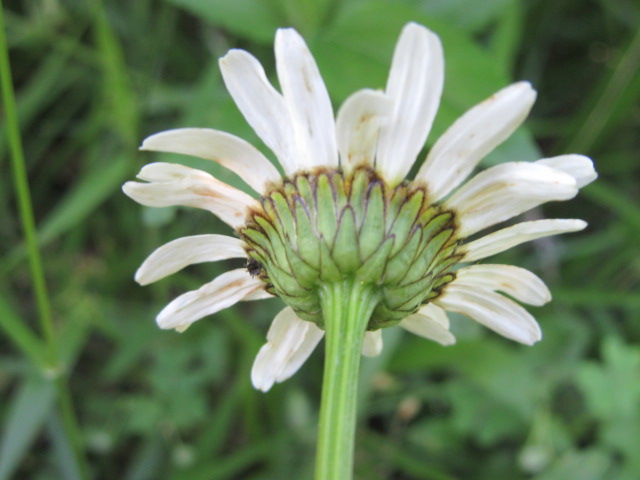
Leucanthemum vulgare (Ox Eye Daisy) on 5-28-22, #885-27.
The above shows the interesting involucral bracts.
Fowers can produce up to 200 seeds each and plants as many as 26,000 seeds that can remain viable for up to 40 years!
If allowed to spread, Leucanthemum vulgare will reduce the amount of quality grazing land. In natural habitats, it can invade and displace colonies of natural species. Studies have also shown that Leucanthemum vulgare carries several crop diseases.
Leucanthemum vulgare is fairly popular as an ornamental perennial plant in flower beds and wildflower gardens. There are several cultivars available. It will grow well in full sun to part shade and prefers a fairly moist environment.
There are more photos at the bottom of the page…
I have enjoyed photographing and learning about the many wildflowers growing on the farm and other areas. I have grown over 500 different plants and identified over 250 wildflower species (most have pages listed on the right side of the blog. I am not an expert, botanist, or horticulturalist. I just like growing, photographing and writing about my experience. I rely on several websites for ID and a horticulturalist I contact if I cannot figure them out. The iNaturalist website also has a great drag-and-drop way to identify wildflowers, brds, insects, etc. Wildflowers can be somewhat variable from location to location, so sometimes it gets a bit confusing. If you see I have made an error, please let me know so I can correct what I have written.
I hope you found this page useful and be sure to check the links below for more information. Some databases may not be up-to-date but they are always a work in progress. They were written by experts and provide much more information. If you can, I would appreciate it if you would click on the “Like” below and leave a comment. It helps us bloggers stay motivated. You can also send an email to me at thebelmontrooster@yahoo.com. I would enjoy hearing from you especially if you find something is a bit whacky.
FOR FURTHER READING:
PLANTS OF THE WORLD ONLINE (GENUS/SPECIES)
INTERNATIONAL PLANT NAMES INDEX (GENUS/SPECIES)
TROPICOS (GENUS/SPECIES)
FLORA OF MISSOURI (GENUS/SPECIES)
FLORA OF NORTH AMERICA (GENUS/SPECIES)
WORLD FLORA ONLINE (GENUS/SPECIES)
WIKIPEDIA (GENUS/SPECIES)
DAVE’S GARDEN
MISSOURI PLANTS
iNATURALIST
WILDFLOWER SEARCH
USDA PLANTS DATABASE
ILLINOIS WILDFLOWERS
MINNESOTA WILDFLOWERS
KANSAS WILDFLOWERS AND GRASSES
PFAF (PLANTS FOR A FUTURE)
GO BOTANY
FLORA FINDERNOTE: The data (figures, maps, accepted names, etc.) may not match on these websites. It depends on when and how they make updates and when their sources make updates. Some websites have hundreds and even many thousands of species to keep up with. Accepted scientific names change periodically and it can be hard to keep with as well. Some of the links may use a name that is a synonym on other sites. In my opinion, Plants of the World Online by Kew is one of the most reliable and up-to-date plant databases and they make updates regularly. I make updates “at least” once a year and when I write new pages or add new photos but I do get behind. We are all a work in progress. 🙂
PHOTOS FROM 2019…

Leucanthemum vulgare (Ox-Eye Daisy on 6-19-19, #592-21.
The photos from 2019 were taken in a friend’s pasture in Johnson County. There were A LOT in this one specific area.
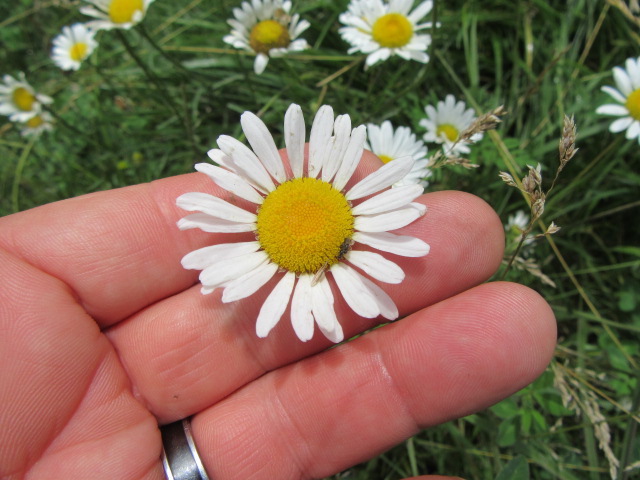
Leucanthemum vulgare (Ox-Eye Daisy on 6-19-19, #592-22.

Leucanthemum vulgare (Ox-Eye Daisy on 6-19-19, #592-23.

Leucanthemum vulgare (Ox-Eye Daisy on 6-19-19, #592-24.
PHOTOS FROM 2021…
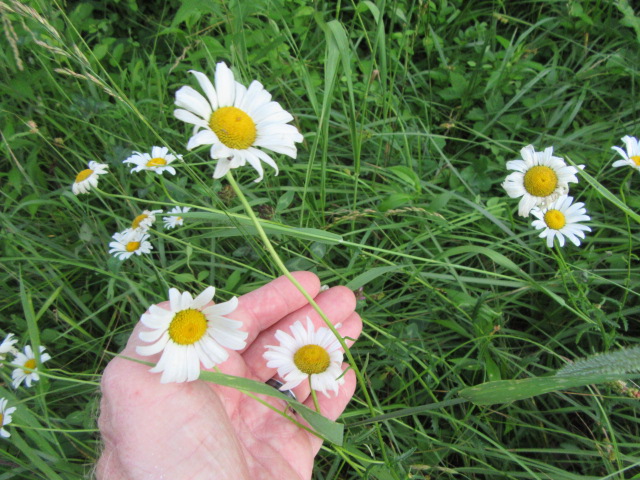
Leucanthemum vulgare (Ox Eye Daisy) on 6-15-21, #800-18.
Photos from 2021 were taken here on the farm in the upper end of the south hayfield…

Leucanthemum vulgare (Ox Eye Daisy) on 6-15-21, #800-19.

Leucanthemum vulgare (Ox Eye Daisy) on 6-16-21, #801-51.
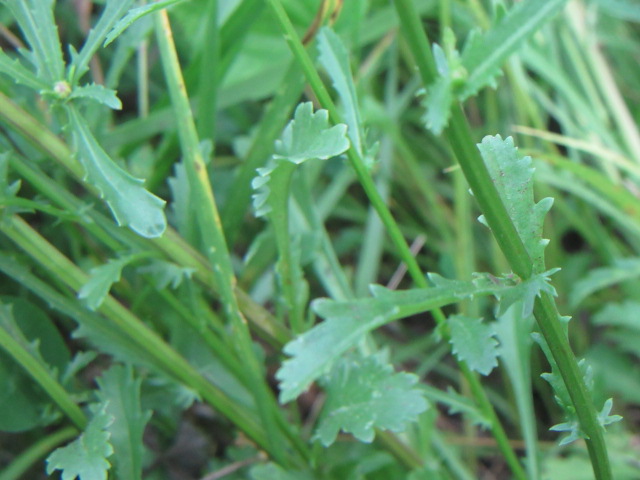
Leucanthemum vulgare (Ox Eye Daisy) on 6-16-21, #801-52.
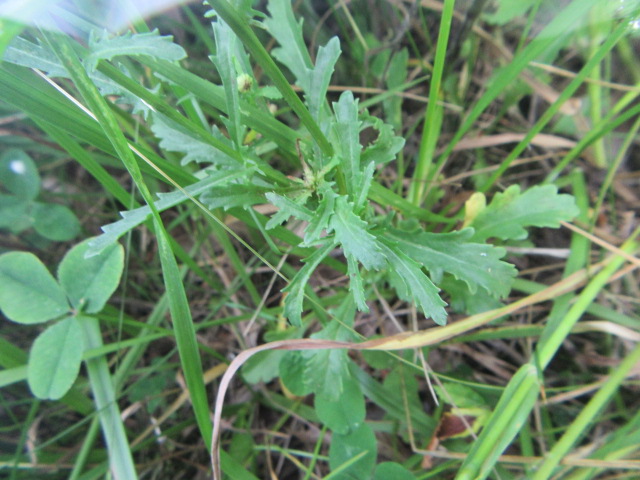
Leucanthemum vulgare (Ox Eye Daisy) on 6-16-21, #801-53.
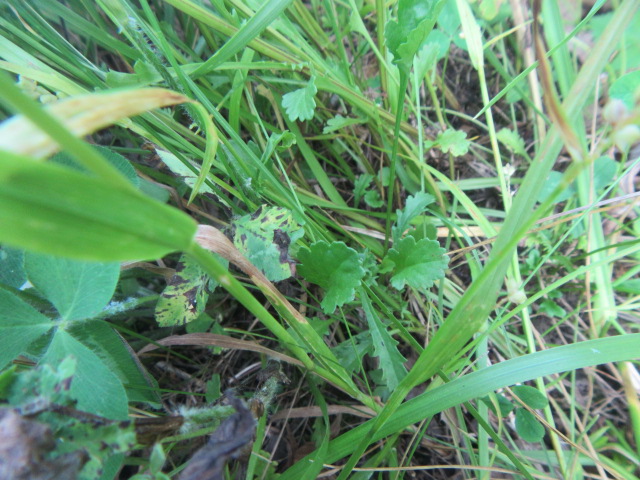
Leucanthemum vulgare (Ox Eye Daisy) on 6-16-21, #801-54.
PHOTOS FROM 2023…

Leucanthemum vulgare (Ox Eye Daisy) on 6-4-23, #943-61.

Leucanthemum vulgare (Ox Eye Daisy) on 6-4-23, #943-62.

Leucanthemum vulgare (Ox Eye Daisy) on 6-4-23, #943-63.